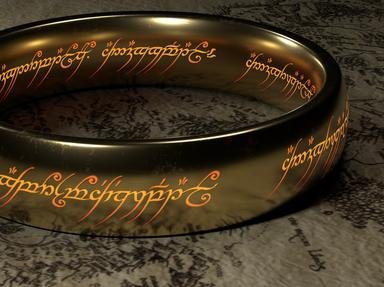Quiz Answer Key and Fun Facts
1. 'The Book of Lost Tales' covers much of the same ground as 'The Silmarillion', but was written much earlier, and has a number of significant differences. Which of these stories provides the uniting framework for 'The Book of Lost Tales 1', published in 1983?
2. 'The Book of Lost Tales 2', published in 1984, contains six stories. Which of these is the first version of the romance between Beren and Luthien?
3. 'The Lays of Beleriand' was published in 1985. What is a lay?
4. The fourth volume of 'The History of Middle-earth', published in 1986, showed the gradual crystallisation of the final vision of 'The Silmarillion' from the earliest sketchy legends that started the process. What is the name of this book?
5. Which of the pieces collected in the fifth volume of 'The History of Middle-earth', and included in its title, was written as the result of a bargain between JRR Tolkien and his friend CS Lewis?
6. The sixth volume of 'The History of Middle-earth', published in 1988, is titled 'The Return of the Shadow'. Its title comes from a planned, but discarded, name for a section of which of Tolkien's other works?
7. Which volume of 'The History of Middle-earth' includes in its opening inscription (translated here from the Elvish) the words, "then is told of the return of Gandalf Mithrandir, of the meeting of the hobbits with Fangorn and of the war upon the Riders of Rohan by the traitor Saruman"?
8. In 'The History of Middle-earth', Christopher Tolkien includes four volumes (published separately as 'The History of the Lord of the Rings') which broke his father's work into four volumes, not the traditional three. With what event does the third volume, 'The War of the Ring', finish?
9. 'Morgoth's Ring', the tenth volume of 'The History of Middle-earth', includes a number of stories. Which of these is in the form of a discussion which reflects on the differing tragedies of death and immortality?
10. The final volume of 'The History of Middle-earth' is titled 'The Peoples of Middle-earth'. Which of these Tolkien characters appears ONLY in this book?
Source: Author
looney_tunes
This quiz was reviewed by FunTrivia editor
LadyCaitriona before going online.
Any errors found in FunTrivia content are routinely corrected through our feedback system.

